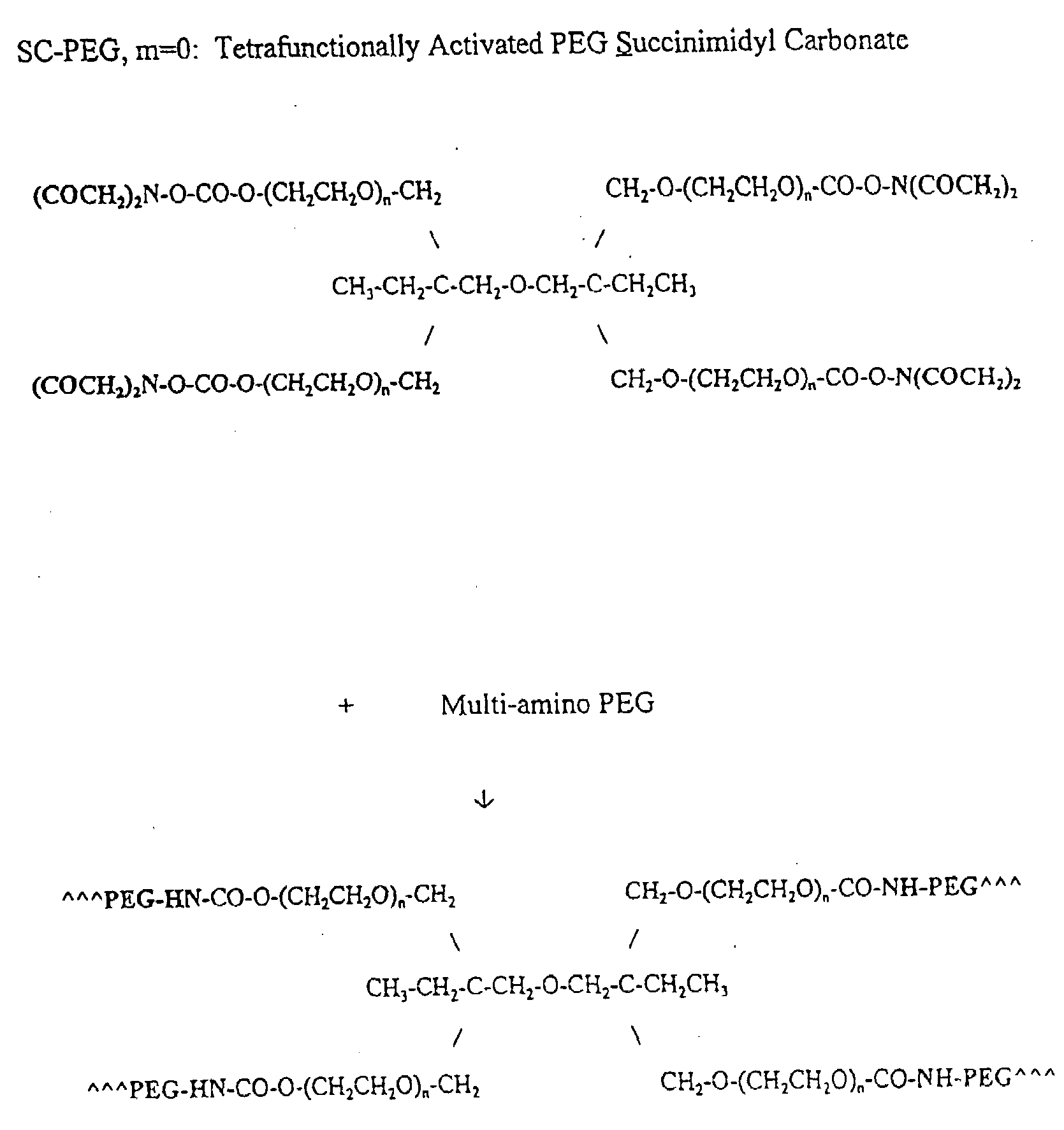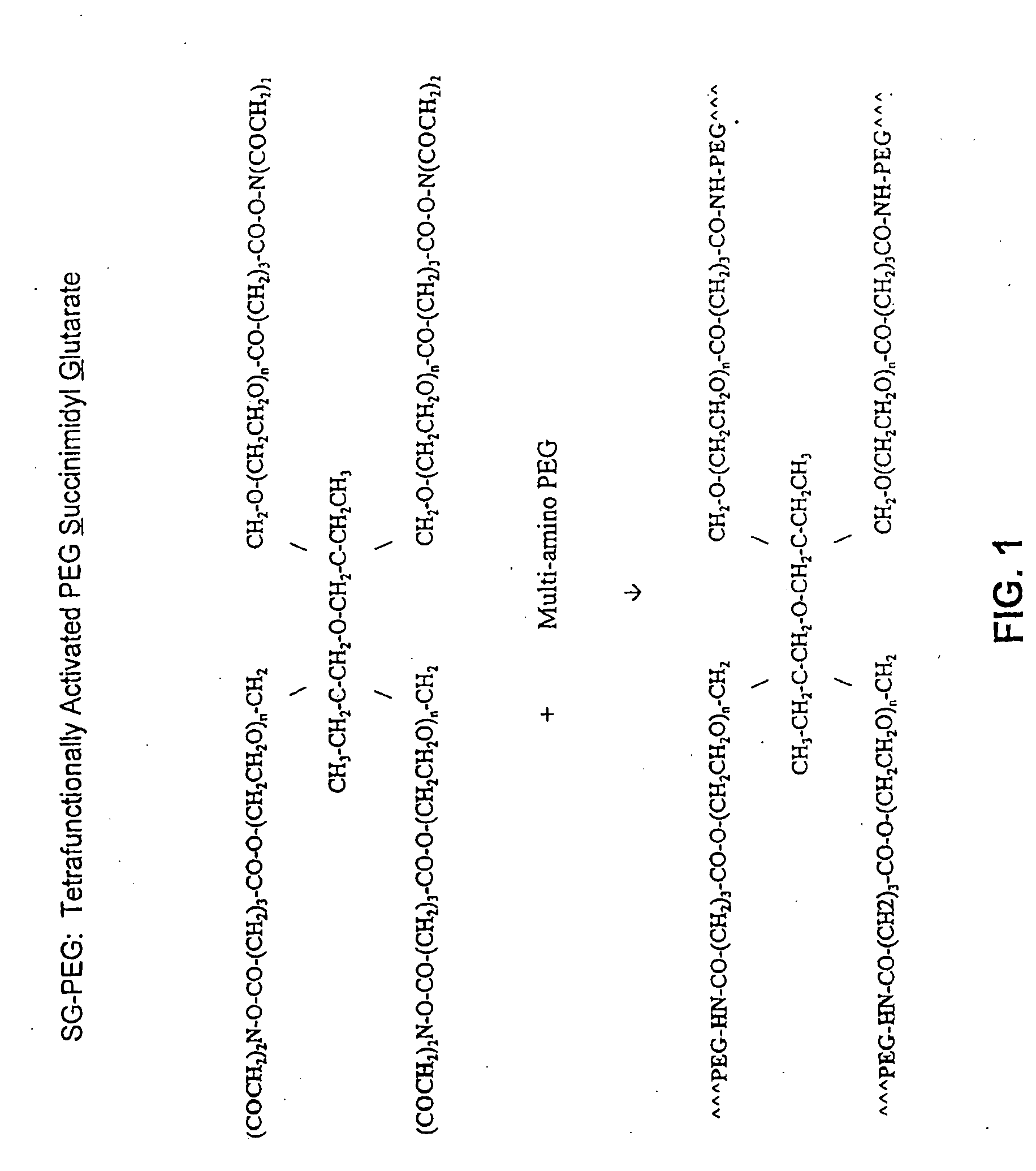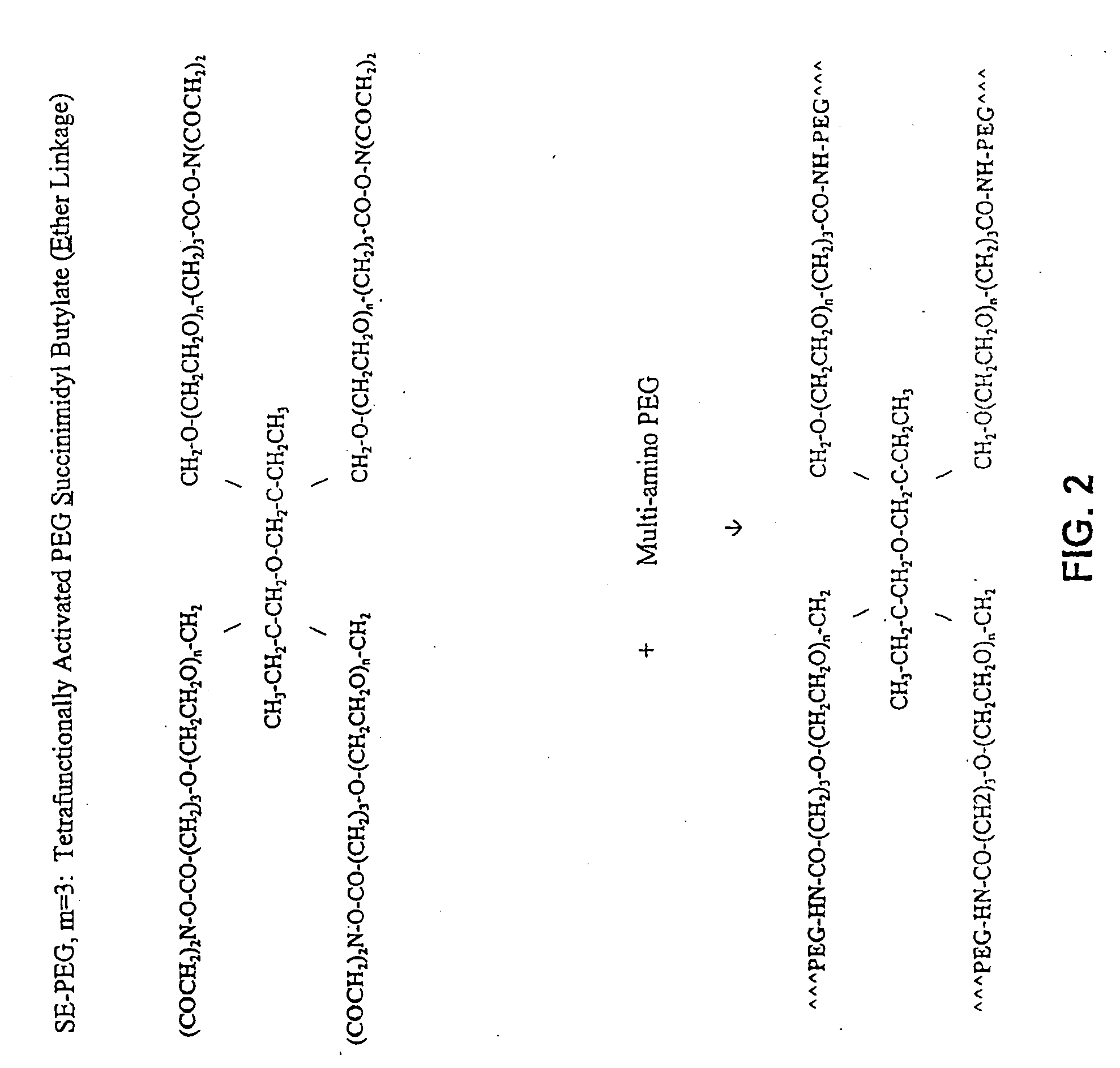Methods and Crosslinked Polymer Compositions for Cartilage Repair
a crosslinked polymer and cartilage technology, applied in the field of cartilage repair methods, can solve the problems of not being readily degraded in vivo, and achieve the effect of facilitating tissue healing and regeneration
- Summary
- Abstract
- Description
- Claims
- Application Information
AI Technical Summary
Benefits of technology
Problems solved by technology
Method used
Image
Examples
example 1
Gelation OF NHS-PEG and HS-PEG
[0264]A homogenous mixture of NHS-PEG and HS-PEG was obtained by mixing approximately equal amounts of the two powders. A 20% (w / v) solution of mixed PEG powder was then prepared by dissolving the powder in diluted HCl. The obtained solution (pH 2.1) was then cosprayed with an equal volume of a 300 mM sodium phosphate / sodium carbonate buffer (pH 9.6). Gelation occurred almost immediately (<3 sec) and the gel obtained its firm, rubbery, solid properties in less than a minute with a total solid content of approximately 10% PEG.
example 2
Gelation of NHS-PEG, HS-PEG, and Methylated Collagen
[0265]A crosslinked hydrogel was formed from an acidic solution of NHS-PEG, HS-PEG, and a methylated collagen (MC). The acidic paste (pH 3-4) containing 10% NHS-PEG, 10% HS-PEG, and 22 mg / mL of MC spontaneously gelled when mixed with an equal volume of 0.3 M phosphate / carbonate solution (pH 9.6). Gelation occurred within seconds to form a strong hydrogel that adheres well to the tissue and swells in a controlled fashion in saline solution. As previously noted, the combination of NHS-PEG (10K), HS-PEG (10K), and MC is associated with the tradename CHONDROGEL™.
example 3
Gelation of NHS-PEG, HS-PEG, and MC on a Tissue Sample
[0266]A crosslinked hydrogel (i.e., CHONDROGEL™) was formed from an acidic solution of NHS-PEG, HS-PEG, and a methylated collagen (MC). The acidic paste (pH 3-4) containing 10% NHS-PEG, 10% HS-PEG, and 22 mg / mL of MC was applied onto a tissue and shaped with a spatula to its desired form. In a subsequent step, a smaller volume of 0.3 M phosphate / carbonate solution (pH 9.6) than that used in Example 2 was applied (via spraying or dropping) to the paste. Gelation of the paste started immediately and continued as the 0.3 M phosphate / carbonate solution diffused into the tissue. Within a few minutes, a strong hydrogel that adhered well to the tissue and swells in a controlled fashion in saline solution was formed on the tissue.
PUM
| Property | Measurement | Unit |
|---|---|---|
| biocompatible | aaaaa | aaaaa |
| hydrophilic | aaaaa | aaaaa |
| hydrophobic | aaaaa | aaaaa |
Abstract
Description
Claims
Application Information
 Login to View More
Login to View More - R&D
- Intellectual Property
- Life Sciences
- Materials
- Tech Scout
- Unparalleled Data Quality
- Higher Quality Content
- 60% Fewer Hallucinations
Browse by: Latest US Patents, China's latest patents, Technical Efficacy Thesaurus, Application Domain, Technology Topic, Popular Technical Reports.
© 2025 PatSnap. All rights reserved.Legal|Privacy policy|Modern Slavery Act Transparency Statement|Sitemap|About US| Contact US: help@patsnap.com



